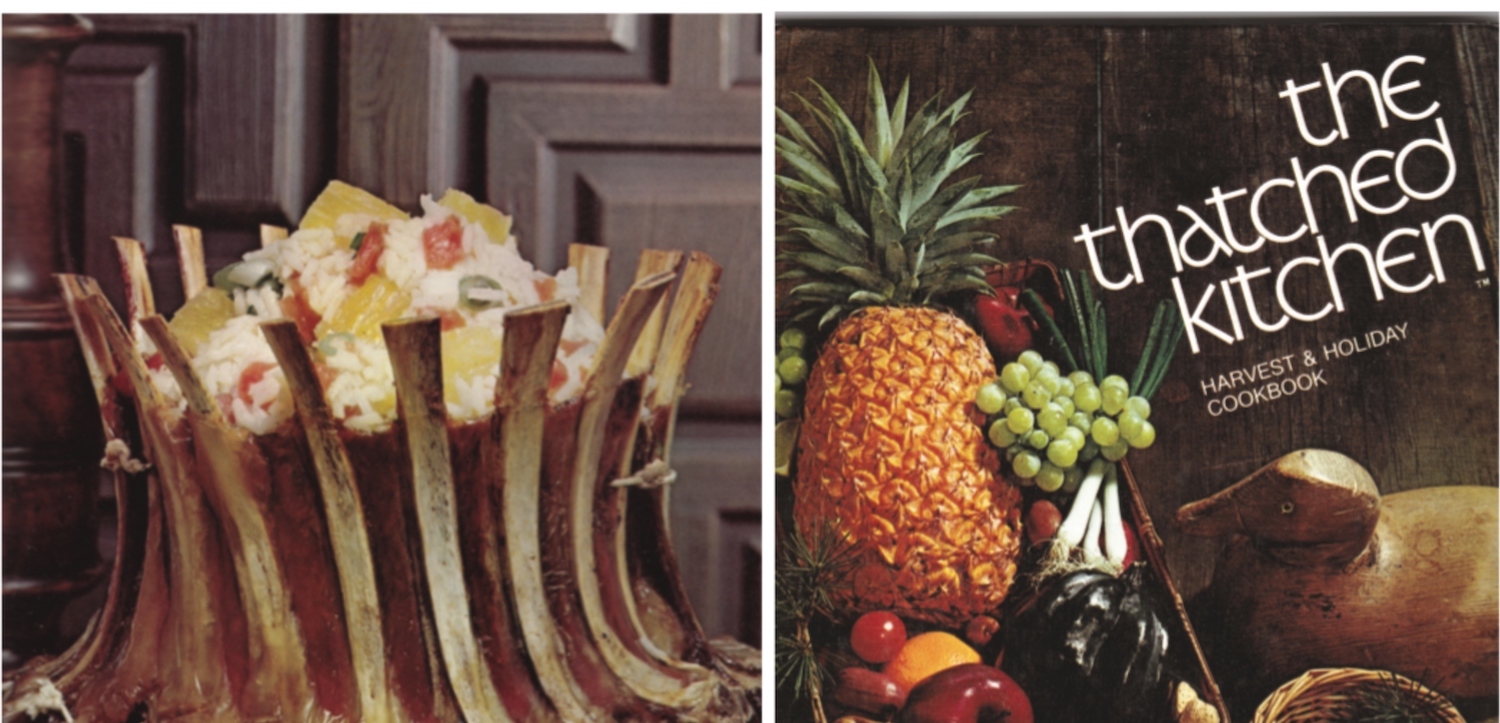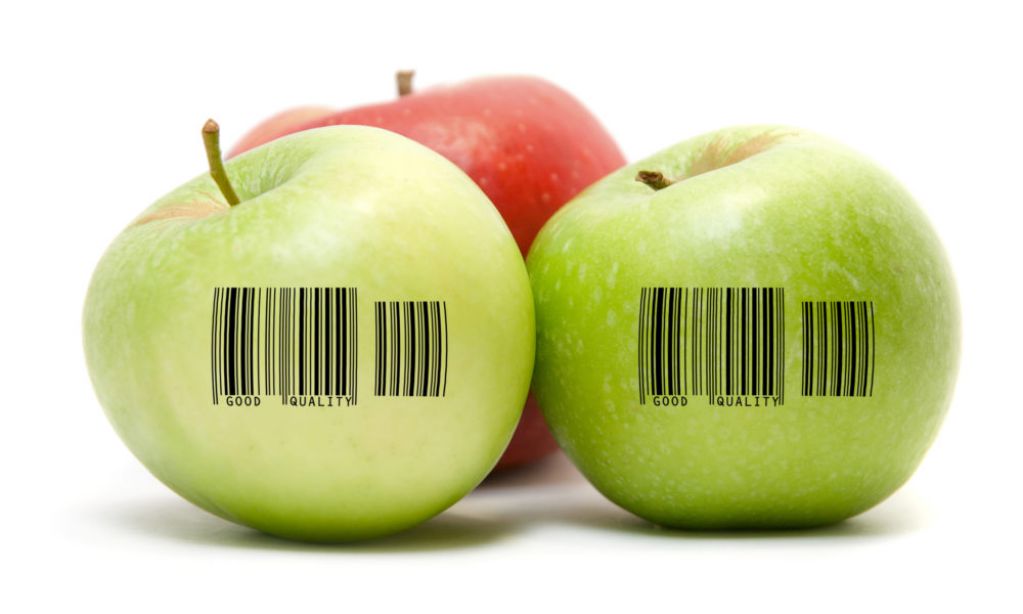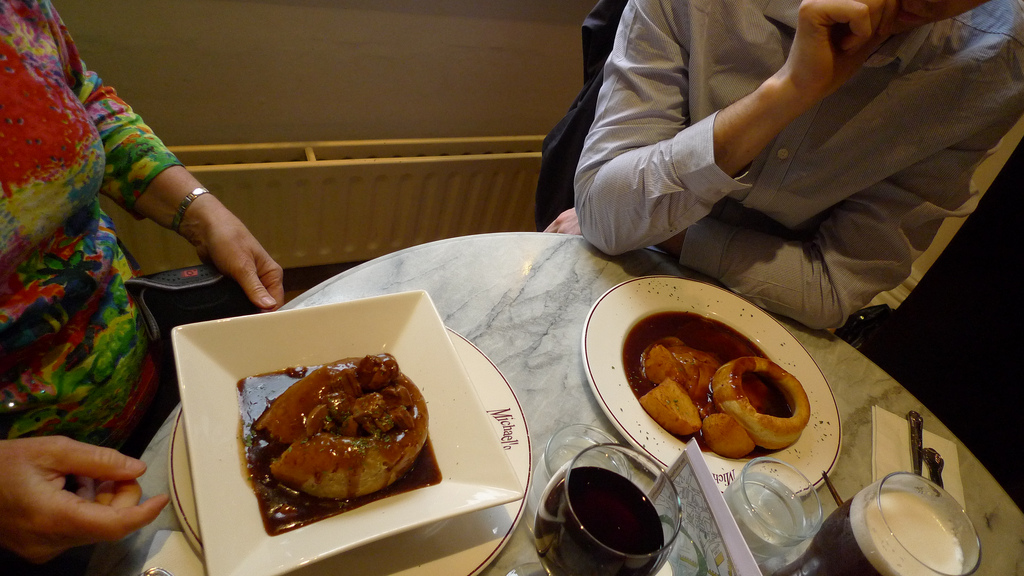
American Advertising Cookbooks
Did anyone ever really like Jell-O? Before it fueled the congealed salad craze of the middle part of the 20th century, families made their own gelatin and used it for much less glamorous purposes—primarily preserving meat. But when Jell-O and its main competitor, Knox, started mass-marketing the stuff in the 1920s and 30s, they had to convince a whole generation of home cooks that serving shrimp, cucumber, and onion suspended in a savory lemon-lime Jell-O loaf would impress their guests. No small feat.
Jell-O hired teams of traveling salesmen to distribute free cookbooks across the country, a tactic that succeeded wildly. (It didn’t hurt that commercial gelatin’s invention came right on the heels of the home refrigerator, so serving a Jell-O dish became a bit of a status symbol. The congealing process requires cool air, and a nice quivering mold in the center of the table reminded guests you’d made it. Or at least made it far enough to buy a fridge.)
But in their race to turn the American home cook onto new and unfamiliar foods—not to mention shortening, sugar, and canned meat—the food industry and advertising agencies wound up conjuring lasting ideas about how we should feed our families. In her new book American Advertising Cookbooks: How Corporations Taught Us to Love Spam, Bananas, and Jell-O, Christina Ward compiles decades of food advertisements that range from surprisingly prescient to patently absurd by today’s standards. (Seven-Up once promoted adding soda to milk for infants: “We have the youngest customers in the business.”)
Ward contends that the advertising bonanza that spanned much of the 20th century reshaped the American diet—and not for the better. Here are ten of the wildest anecdotes she uncovered along the way.
 American Advertising Cookbooks
American Advertising Cookbooks Drink up!
Women should eat 1000-1200 calories per day. That’s what nutritional scientists recommended in the 1920s. Maybe it’s no surprise that thinness has been in vogue for a hundred years, but it is surprising that medical professionals recommended women get by on so little. (Today, the United Stated Department of Agriculture recommends that a “moderately active” woman between the age of 26 and 45 eat 2,000 calories a day to maintain a healthy weight.) Even stranger are the diets the so-called experts shilled to help women meet their daily intake: Campbell’s marketed soup “shakes,” which mixed canned soup and milk, and a banana company-promoted a diet of bananas and skim milk.
Crisco for the rich, Crisco for the poor. When Crisco first debuted, its distinctive blue packaging was a big hit with the middle class. But Proctor and Gamble, its parent company at the time, wanted everyone to buy the shortening. Instead of launching a marketing campaign that emphasized Crisco’s affordability, the company simply added some yellow food dye to the naturally-white shortening and changed the packing to create a “new” product: Fluffo. Same product, different prices, different customers. Ward notes that though Fluffo has been discontinued, the practice of repackaging products under new, budget-friendly brands endures today.

More pork for your fork
“Promote pork, run over a chicken.” In 1975, the Pork Industry Group (yep, P.I.G.) was losing market share in the lard business to vegetable-based shortening. The group responded with a cookbook that touted its product’s “shortening power” and claimed “lard is 97 percent digestible.” Its tongue-in-cheek “promote pork, run over a chicken” slogan calls to mind today’s Chik-Fil-A billboards, which feature cows imploring readers to “Eat Mor Chikin.”
 American Advertising Cookbooks
American Advertising Cookbooks Is sauerkraut making a comeback?
Sauerkraut cake. Ward calls the National Kraut Packers’ 1970 cookbook one of “the finest examples of the over-the-top design, images, and recipes associated with the [corporate cookbook] phenomenon.” Put Some Kraut in Your Life uses a pop art typeface and super-saturated colors to give sauerkraut a fresh and youthful new look. The master cookbook authors over at National Kraut Packers seem to have established at least one enduring tradition: sauerkraut cake. Apparently, the acidity of the kraut helps with the leavening process. Ward says it’s still a favorite in Wisconsin.
 American Advertising Cookbooks
American Advertising Cookbooks The Chiquita Banana’s hat was likely inspired by Carmen Miranda’s fruit hat—not that any official partnership ever came to fruition
The Chiquita Banana was conceived by the same cartoonist who drew Hagar the Horrible and Hi and Lois. The banana industry relied heavily on advertising in its early days as it tried to establish a food culture around a fruit not native to American cuisine. Miss Chiquita, the mascot of the United Fruit Company, became the fruit’s most famous emissary—though most people still don’t know she was designed by in 1944 by Dik Browne, who’d go on to create two of the world’s best-known newspaper comic strips. Miss Chiquita’s hat was likely inspired by Carmen Miranda’s legendary fruit hat, which debuted five years earlier. Fans eventually associated Miranda with the Chiquita Banana, but no official partnership between the two was ever announced.
United Fruit and Che Guevara. Perhaps more than any other food company of its time, United Fruit (now Chiquita) had a hand in shaping U.S. relations with Central America. Ward devotes an entire chapter to United Fruit’s aggressive, sometimes extralegal business tactics, but one episode stands out especially: In the 1950s, the company helped persuade President Eisenhower to unseat the president of Guatemala. The operation, conducted by the CIA, captured one supporter of the existing regime who would go on to become a household name: Che Guevara. The CIA mission leader later said he regretted releasing Guevara.
The parallel path of the banana’s culinary status. As the banana trade was reshaping the politics of an entire hemisphere, most banana eaters remained none the wiser. In fact, Ward traces the evolution of the banana in U.S. culture by the shrinking number of corporate cookbooks devoted to the fruit. At first, these books explained how bananas grew, how to know they’re ripe, and where to store them. By the last editions, no introductory information was necessary. Fast forward to today, and the idea of ham-wrapped bananas drizzled in cheese sauce seems ludicrous—perhaps because they traded exoticism for ubiquity about half a century ago.
 American Advertising Cookbooks
American Advertising Cookbooks Notes on table decor, courtesy of the pineapple industry: “Be lavish with gorgeous flowers and shiny green leaves to create an atmosphere of Polynesian splendor.”
Pineapples from Hawaii, envisioned by Dole. Ever wondered why pineapple conjures up such a powerful association with ham and luaus? Perhaps it’s because Dole worked very hard to create associations between Hawaii, pineapples, and ingredients the average housewife could find at the supermarket. The company, which had a near monopoly on the fruit, churned out corporate cookbooks with titles like The Thatched Kitchen with recipes for “Fiji Beef Chunks” (sirloin tips, garlic salt, canned pineapple).
Aunt Jemima was not the only flat-out racist spokesperson. Not by a long shot…. Many brands played on overtly racist imagery to sell their food throughout the twentieth century. But in 1971, a landmark lawsuit helped curtail the practice. The Mexican Anti-Defamation League sued Frito-Lay, asking the company to discontinue its Frito Bandito character. The League won the lawsuit and, realizing racism could prove a liability, many advertisers backed off.
Feel-good mayonnaise. In the 1920s, a California entrepreneur named Laura Scudder struck gold when she started including a “made on” date on potato chip bags, winning over customers by guaranteeing freshness. During the Great Depression, Scudder managed to provide work for her employees by expanding into mayonnaise and peanut butter. She was persuaded to sell the company in the 1950s only after its new owners promised to retain the existing workforce and pay living wages. Her peanut butter and mayonnaise products are still on the market, but her peanut butter brand is sold by Smucker’s now.
 American Advertising Cookbooks
American Advertising Cookbooks In the 20th century, it was quite common for advertisers to invent idealized, Martha Stewart-type domestica goddesses out of thin air
Betty Crocker was never a real person. Before televisions went mainstream, brands could get away with figureheads that didn’t actually exist. Betty Crocker and Chiquita Banana were both represented on the radio by uncredited female voice actors. And though these are the only spokespeople today’s consumer might recognize, it was quite common for advertisers to invent idealized, Martha Stewart-type domestic goddesses out of thin air. “Sue Swanson” wrote headnotes for recipes that used Swanson frozen foods; “Jane Ashley” wrote recipes for the Corn Producers’ Association.










